We may be compensated if you purchase through links on our website. Our team is committed to delivering honest, objective, and independent reviews on home products and services.
Project details
Skill
Cost
Estimated Time
 Band saw
Band saw Welder
Welder Table saw
Table saw hot glue gun
hot glue gun Power grinder
Power grinder Belt sander
Belt sander Paint brush
Paint brush
Creating a unique and eye-catching piece of furniture doesn’t have to break the bank or require advanced woodworking skills. A sliced twig table is a perfect example of how you can transform simple materials into a stunning conversation piece for your home. This project combines the natural beauty of wood with the industrial look of metal, resulting in a table that’s both rustic and modern. Maker Jimmy DiResta demonstrates how to craft this innovative table design, showcasing the process from start to finish.
Gathering Materials and Tools to Build a Sliced Twig Table
Gather all the necessary materials and tools before starting. This preparation ensures a smooth workflow and helps avoid interruptions during the building process.
Materials Needed
- Angle iron (1 inch)
- Round bar stock (3/4 inch)
- MDF board
- Tree branches
- Two-part epoxy resin
- Hot glue
- Chemical blackener
- Spray-on lacquer
- Acetone
- Rags
Tools Required
- Band saw
- Welder
- Table saw
- Hot glue gun
- Power grinder
- Belt sander
- Palm sander
- Paintbrush
- Foam brush
Assembling these items before beginning will help streamline the construction process and can prevent unnecessary delays.
Create the Metal Frame for the Sliced Twig Table
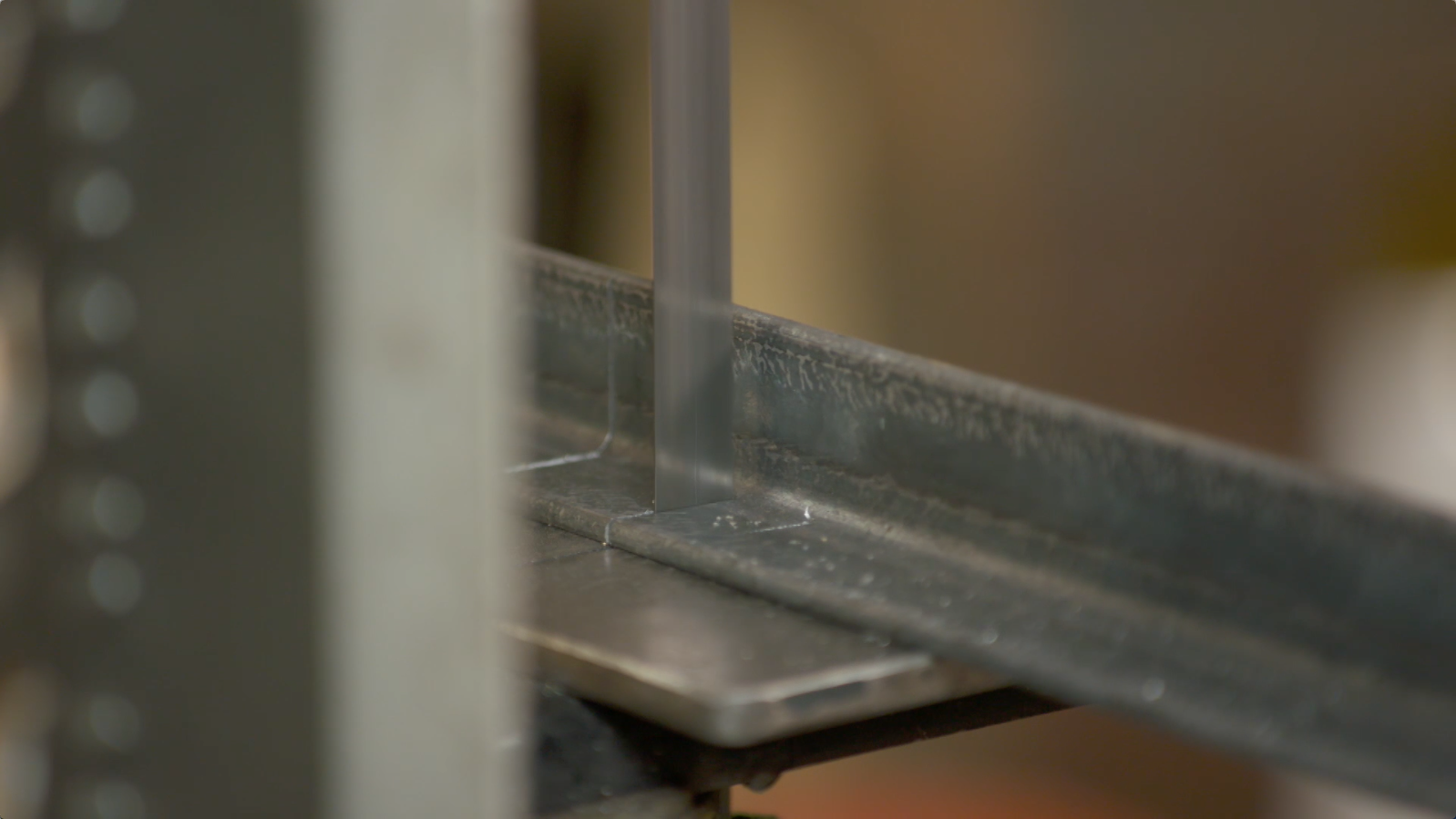
The metal frame serves as the foundation for your sliced twig table. It provides structure and adds an industrial element to the overall design. Following the steps for cutting and welding ensures that the frame is both sturdy and well-aligned.
Cutting and Preparing the Table Frame
- Cut the angle iron to length, approximately 16 inches for each side of the frame.
- Make L-shaped cuts on both ends of two pieces to create notches for better welding joints.
- Cut the round bar stock to 16 inches for the table legs.
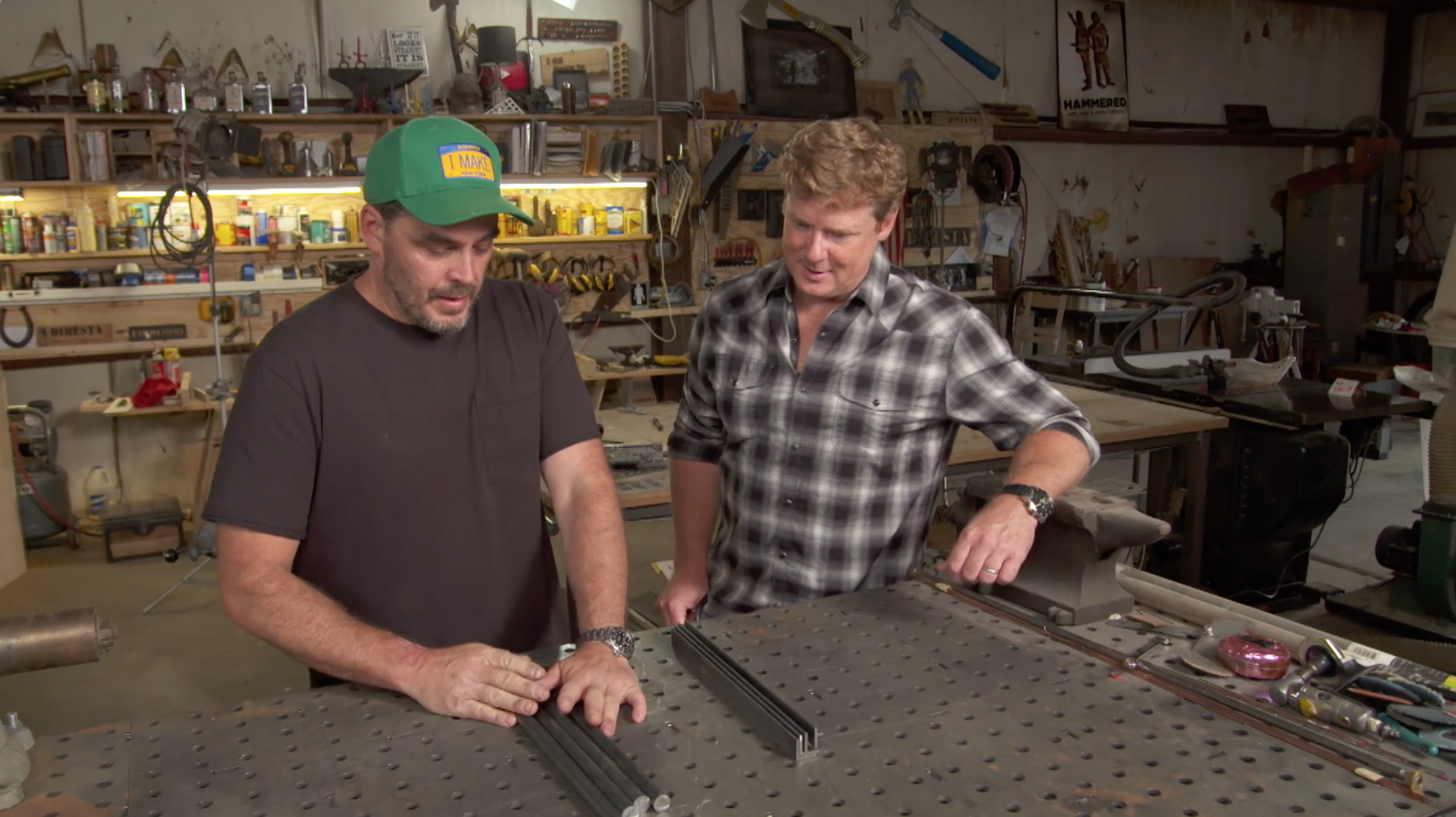
Weld the Table Frame and Legs
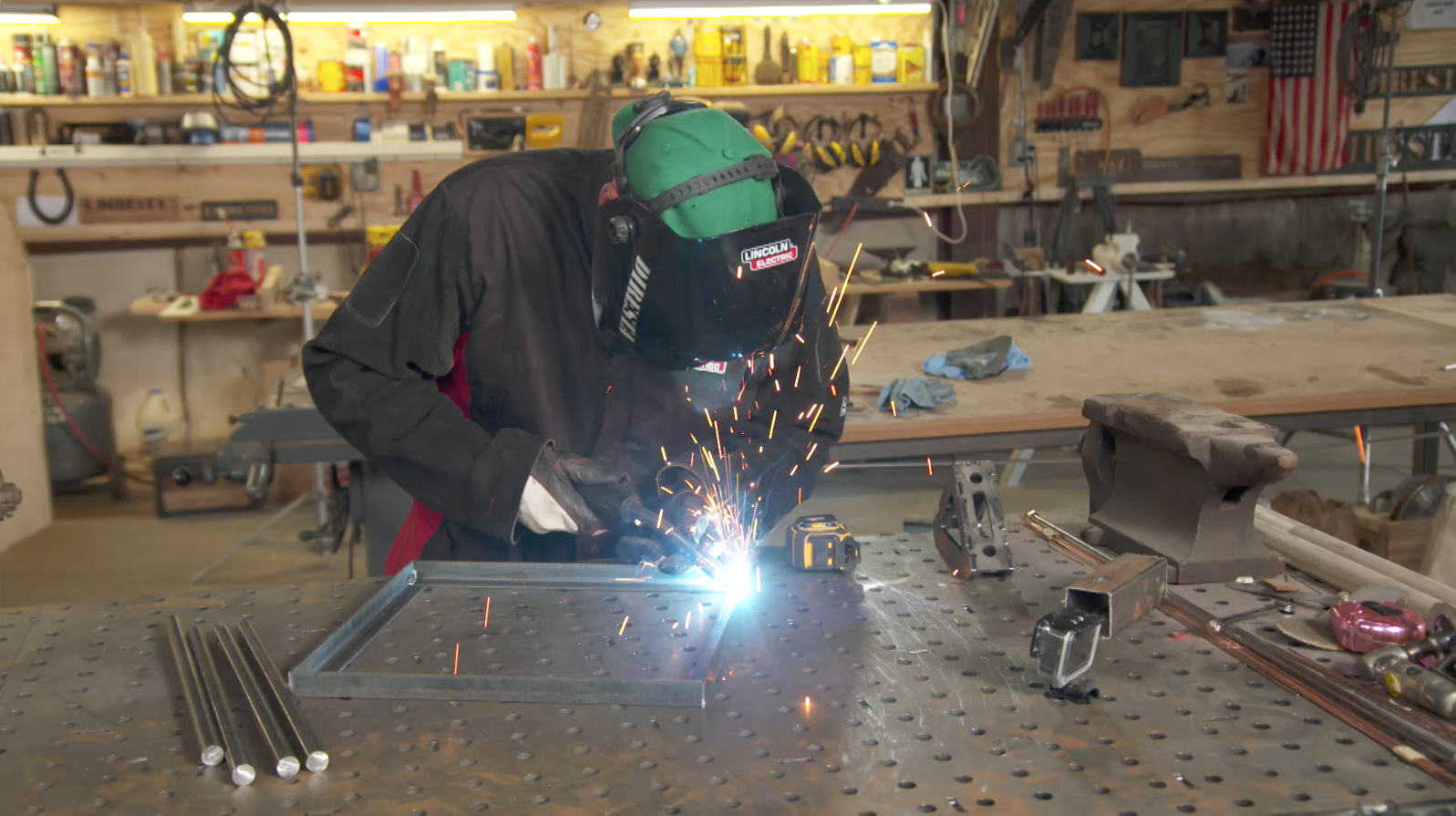
Weld the angle iron pieces together to form a square frame.
Smooth out the welds using a grinder for a clean finish.
Weld the round bar stock legs to each corner of the frame.
Jimmy demonstrates in the video that this notched joint technique creates a stronger weld and a cleaner appearance compared to a simple 45-degree cut.

Prepare the Table Base
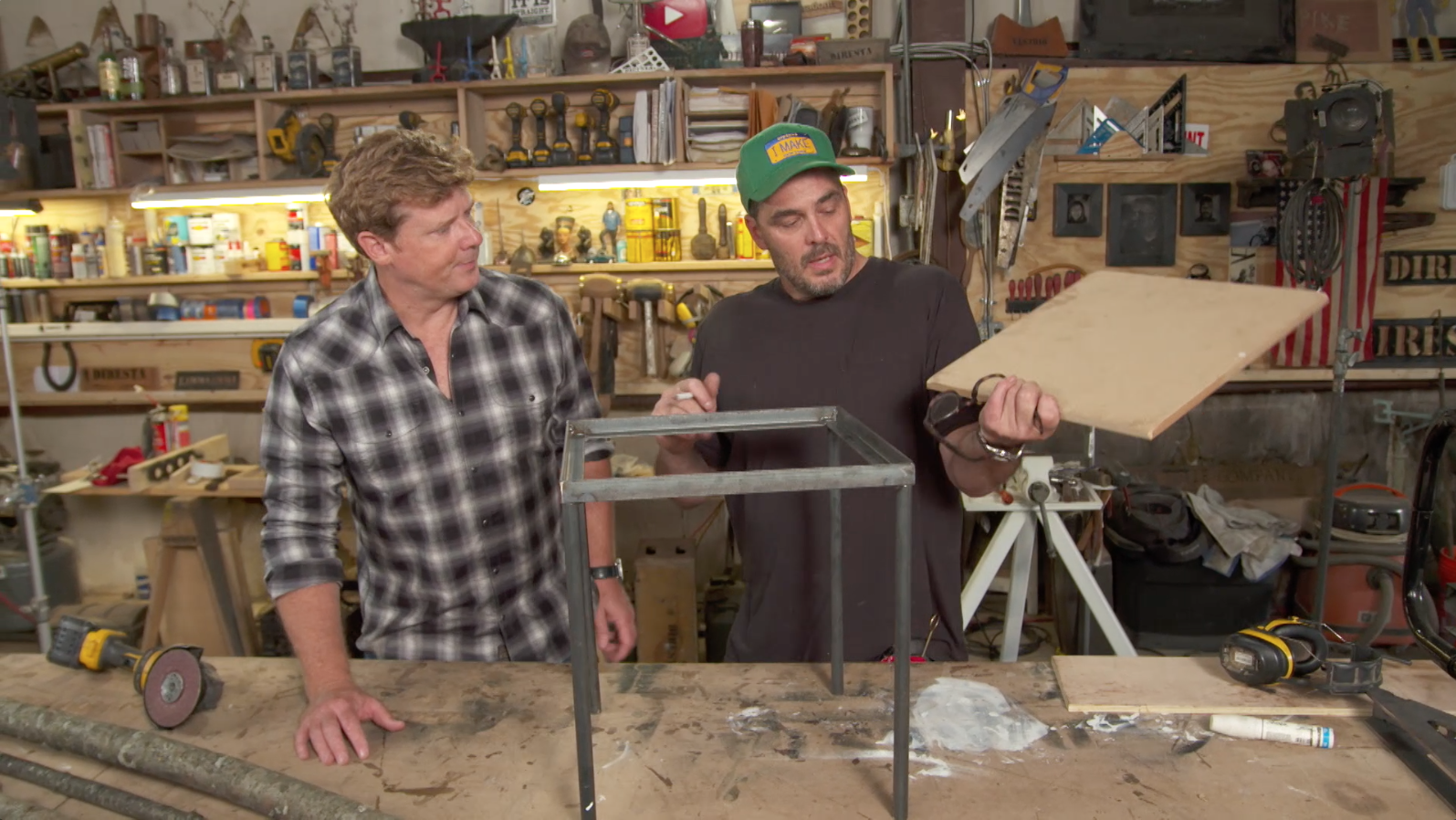
With the metal frame complete, the next step is to create a base for the twig slices. This base provides a surface for the epoxy and wood to adhere to, allowing for a durable and visually appealing tabletop.
Cut and Fit the MDF Base
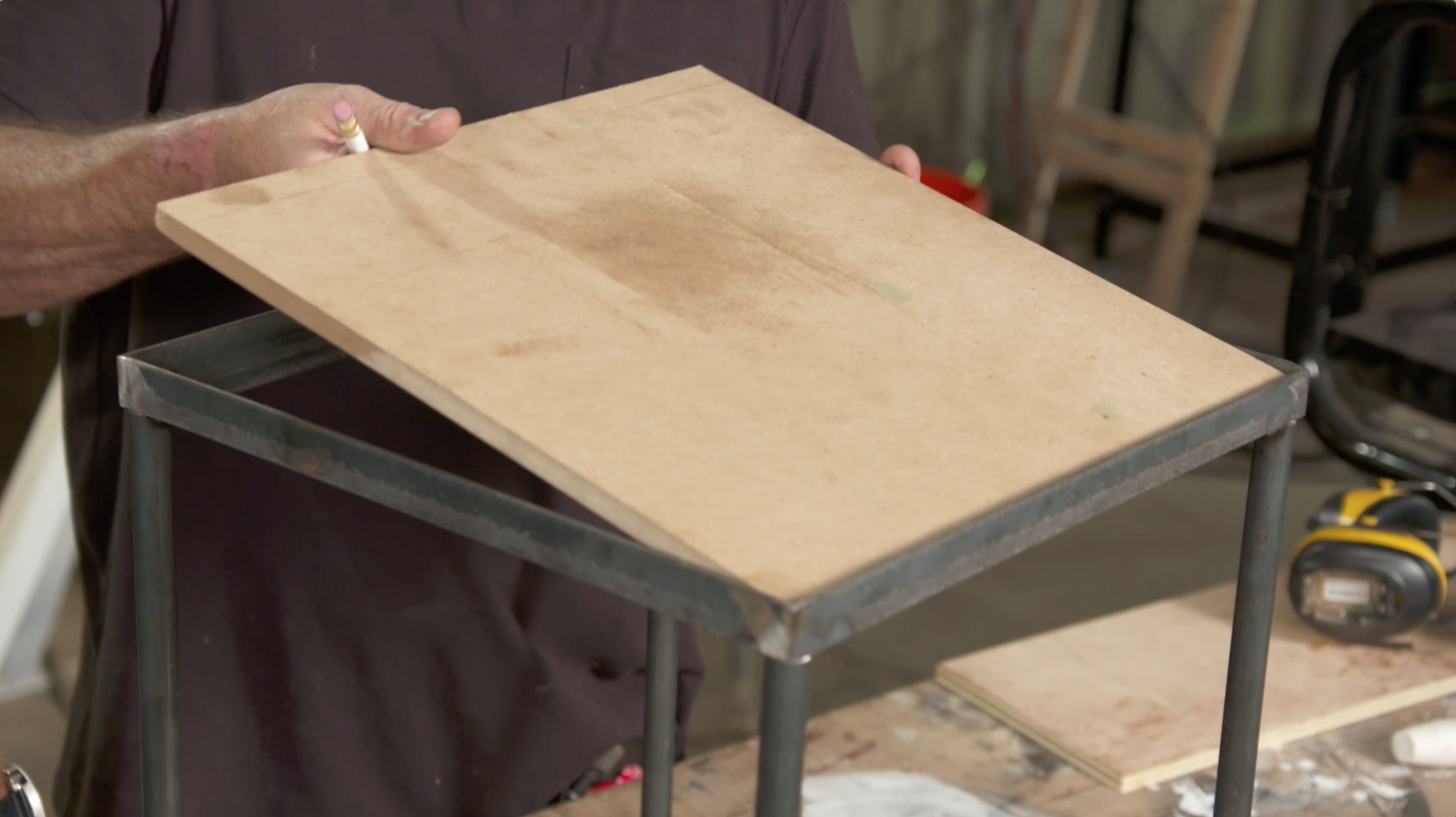
- Cut a piece of MDF to fit snugly inside the metal frame.
- Grind small chunks off the corners of the MDF to ensure a tight fit over the welded joints.
- Place the MDF into the frame, ensuring it’s recessed at least 1/4 inch to leave room for the twig slices.
Sealing the Base
- Use a hot glue gun to seal the gap between the MDF and the metal frame.
- This step is crucial to prevent epoxy from leaking during the next phase of the project.
A well-sealed base is key to preventing any seepage, which can compromise the integrity of the tabletop.
Create the Twig Surface
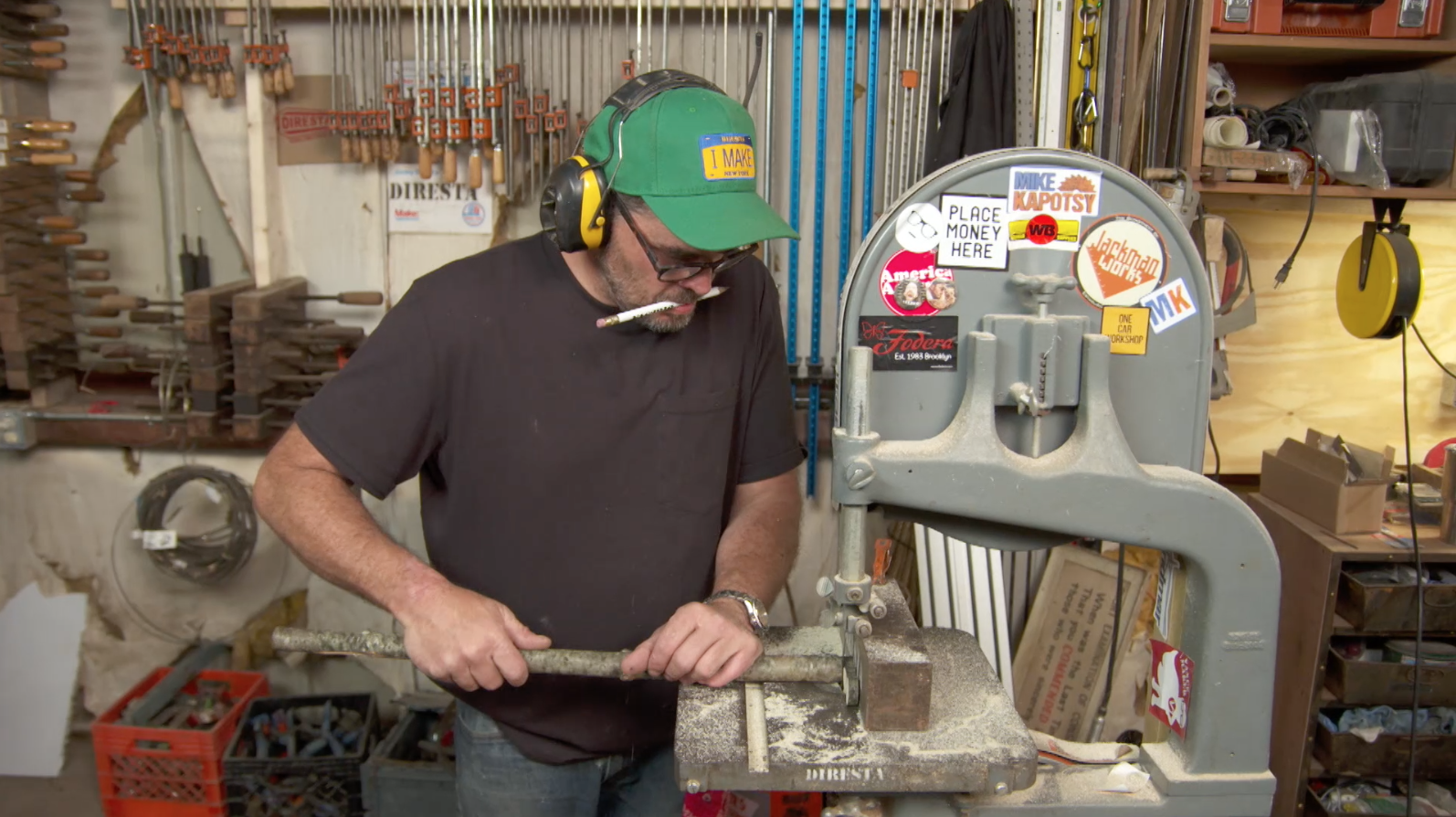
The twig surface is the star of this project, showcasing the natural beauty and unique patterns of the wood. By selecting and arranging various branches, you can craft a tabletop that reflects both creativity and craftsmanship.
Slicing the Branches
- Aim for a mix of sizes and shapes to create an engaging pattern.
- Select a variety of tree branches with different diameters for visual interest.
- Use a band saw to cut the branches into thin slices, approximately 1/4 inch thick.
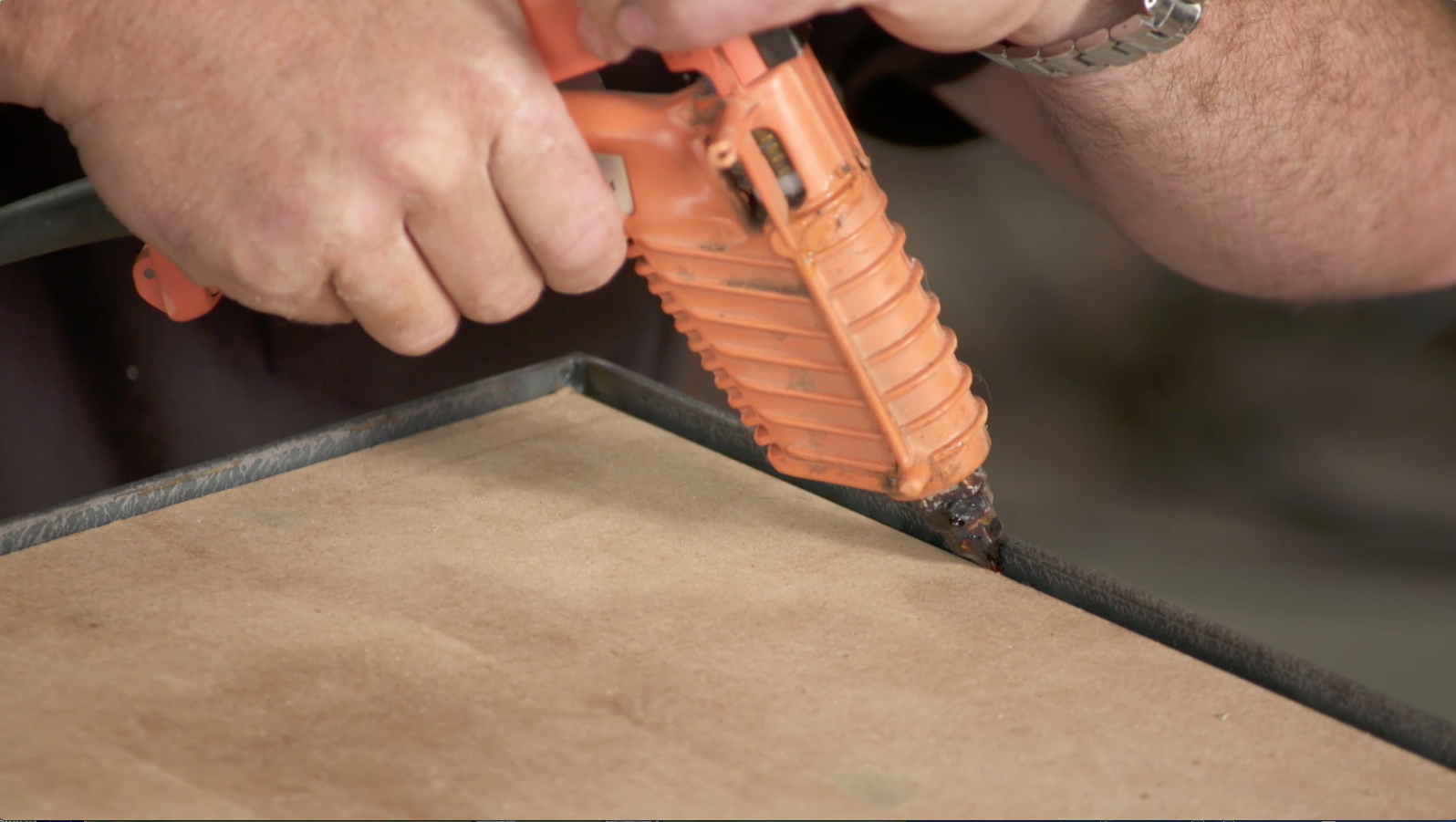
Arrange and Secure the Wood Slices
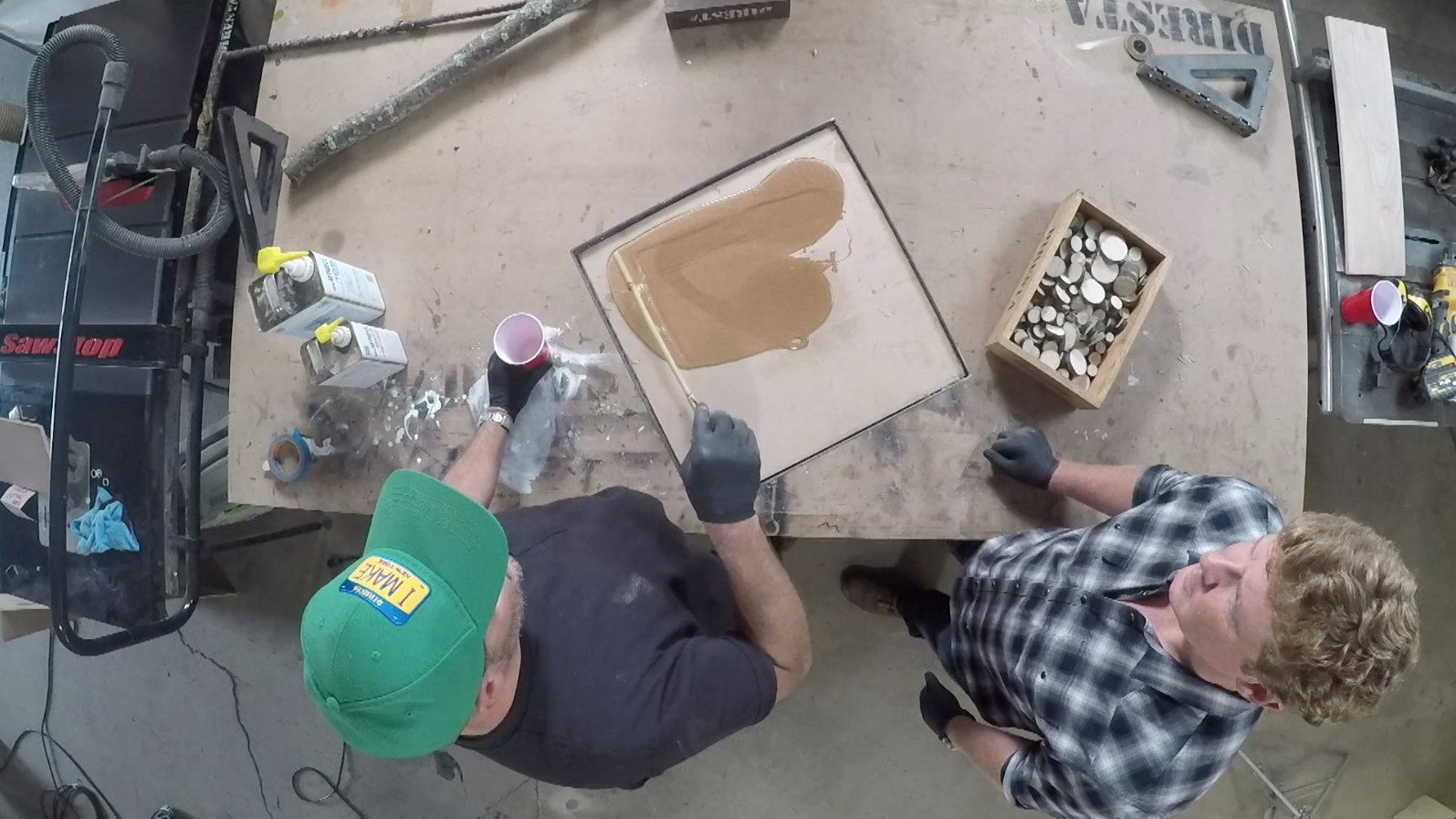
- Pour a generous amount of two-part epoxy onto the MDF base.
- Spread the epoxy evenly across the surface.
- Carefully place the wood slices onto the epoxy-covered base, arranging them in an appealing pattern.
- Allow the epoxy to cure for about two hours, securing the slices in place.
In the video, Jimmy mentions that some of the wood slices may float slightly in the epoxy, which can make sanding a bit more challenging later on.
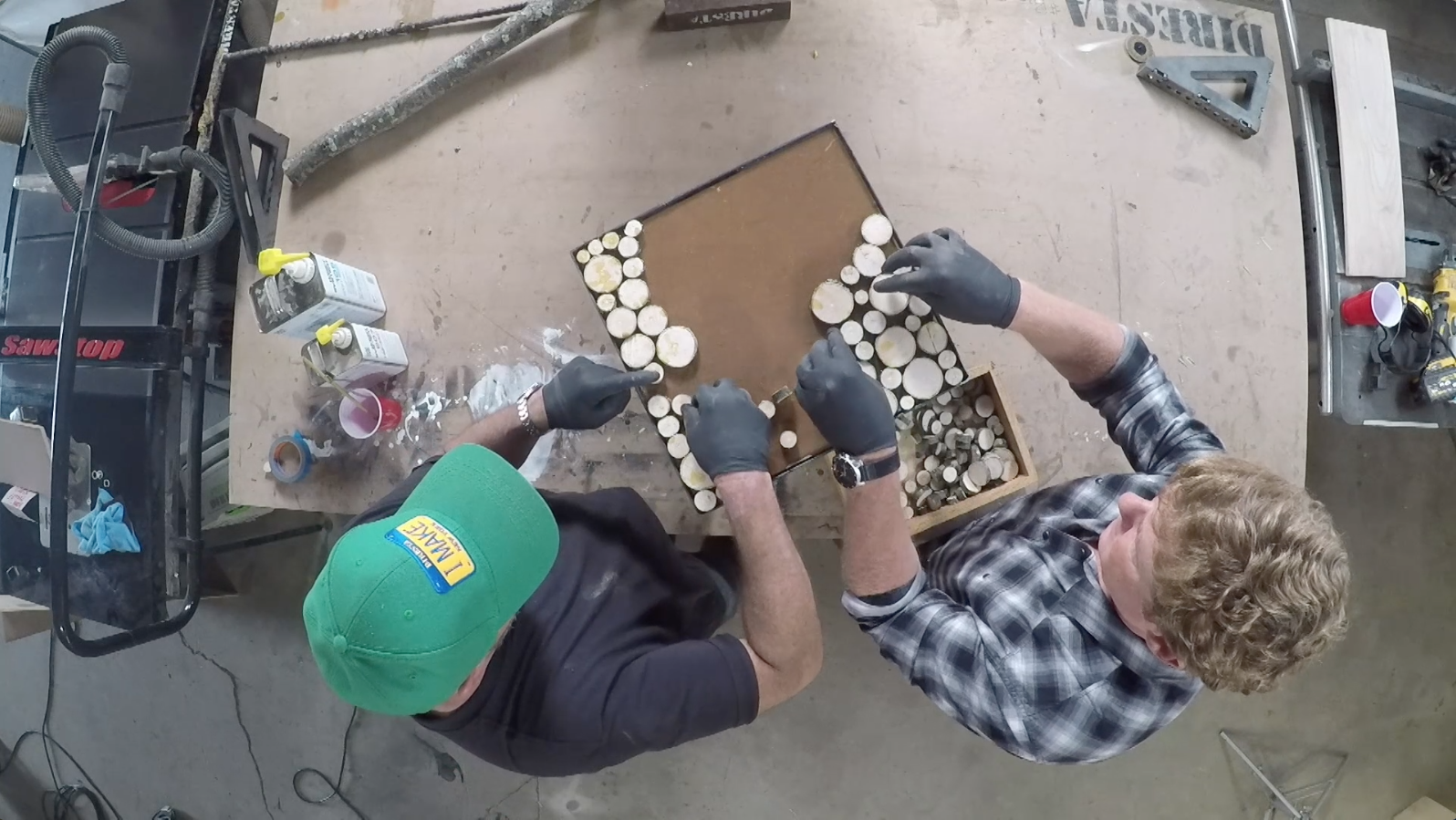
Enhance the Tabletop
Transforming the rough twig surface into a smooth, polished tabletop involves sanding and applying a final coat of epoxy. This process not only enhances the overall appearance but also adds durability and shine to the project.
Sand the Table Surface
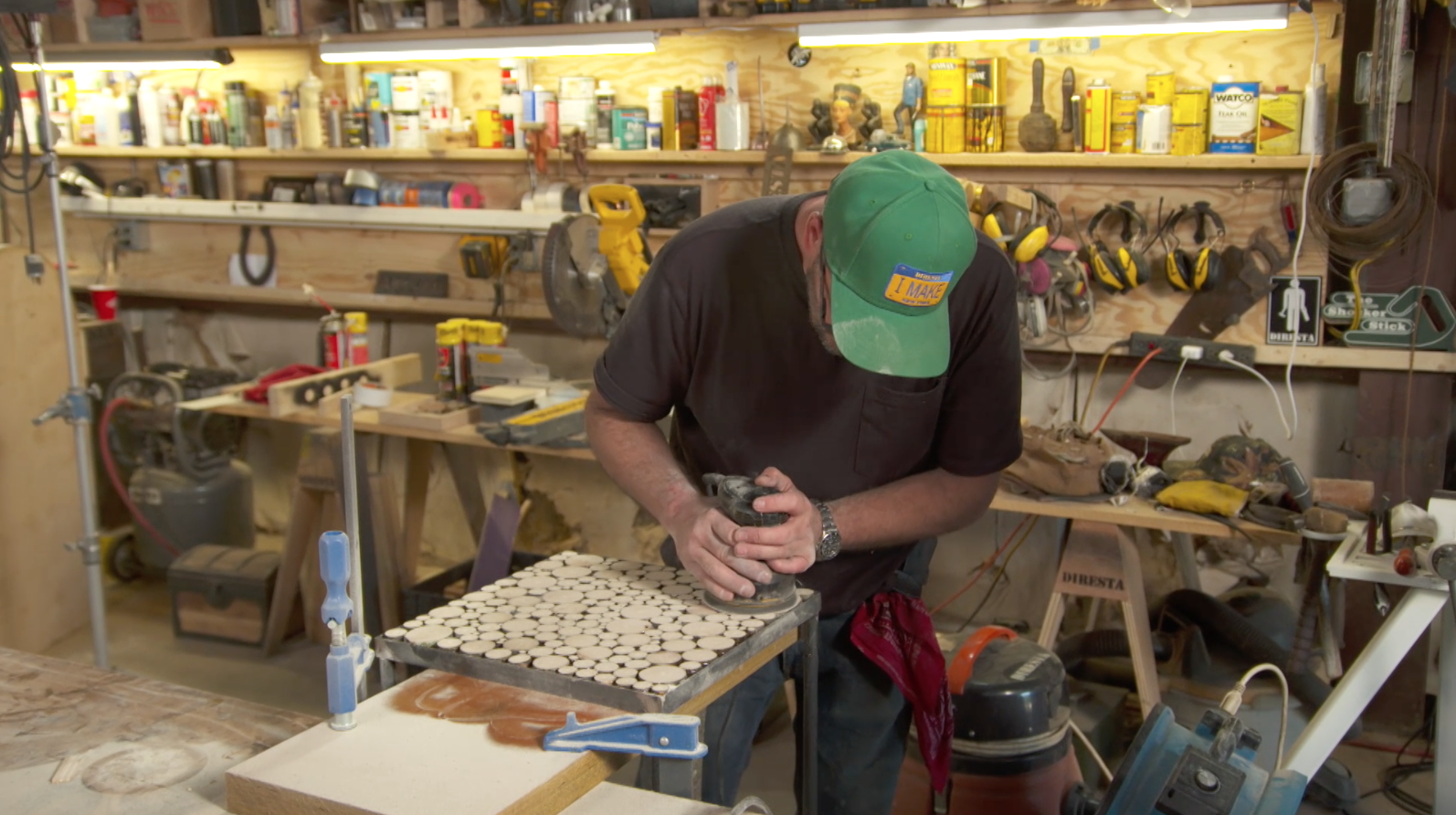
- Once the epoxy has set, use a belt sander to smooth the top surface of the twig slices.
- Follow up with a palm sander for a finer finish.
- Be careful not to sand too aggressively, as you want to maintain the unique character of each twig slice.
Apply the Epoxy Top Coat
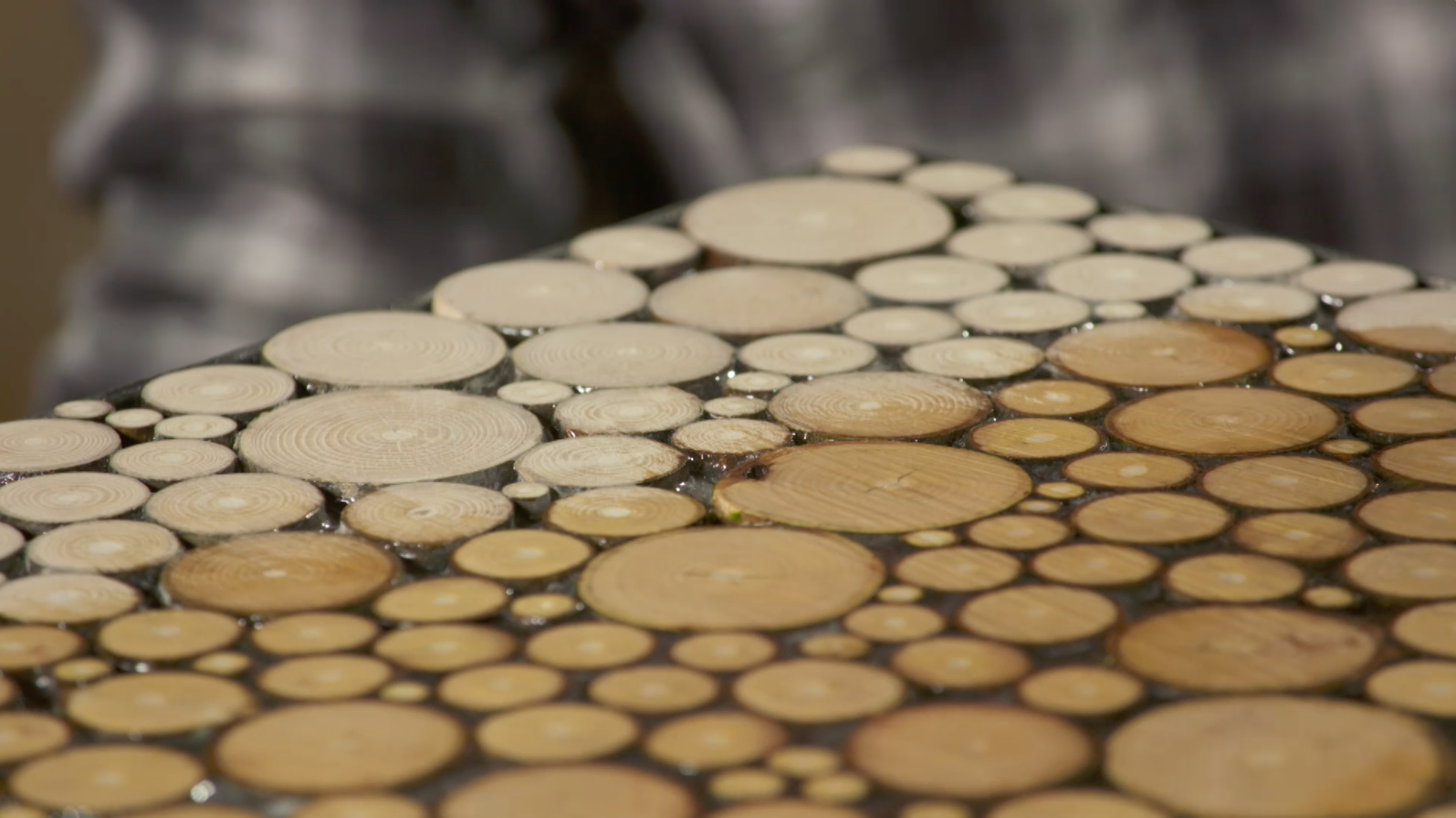
- Mix a new batch of two-part epoxy according to the manufacturer’s instructions.
- Pour the epoxy over the sanded twig surface.
- Use a paintbrush to spread the epoxy evenly, ensuring all gaps and crevices are filled.
- Allow the epoxy to cure for 24 hours or as directed by the product instructions.
Jimmy demonstrates a clever trick for measuring equal parts of the epoxy components using marks on a mixing stick, ensuring the perfect ratio every time.
Finish the Metal Table Frame
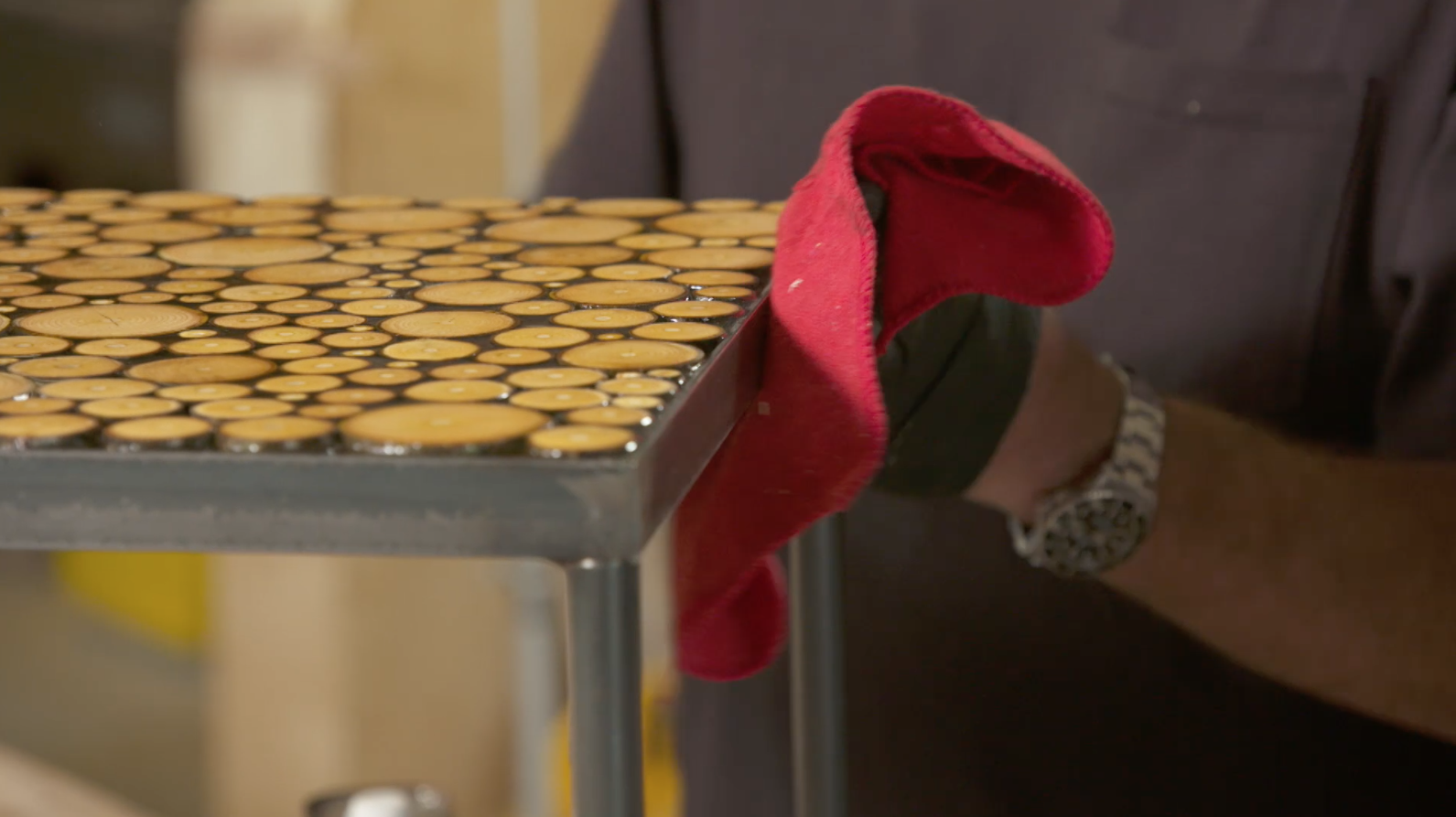
The final steps involve giving the metal frame a professional, polished look that complements the natural wood top. This involves both cleaning and applying a finish to enhance the frame’s visual appeal.
Prepare the Metal Surface
- Lightly sand the metal frame and legs to remove any rust or imperfections.
- Clean the metal thoroughly with acetone and rags to remove any oils or residue.
A clean, well-prepared surface is essential for the subsequent finish application.
Apply Blackener
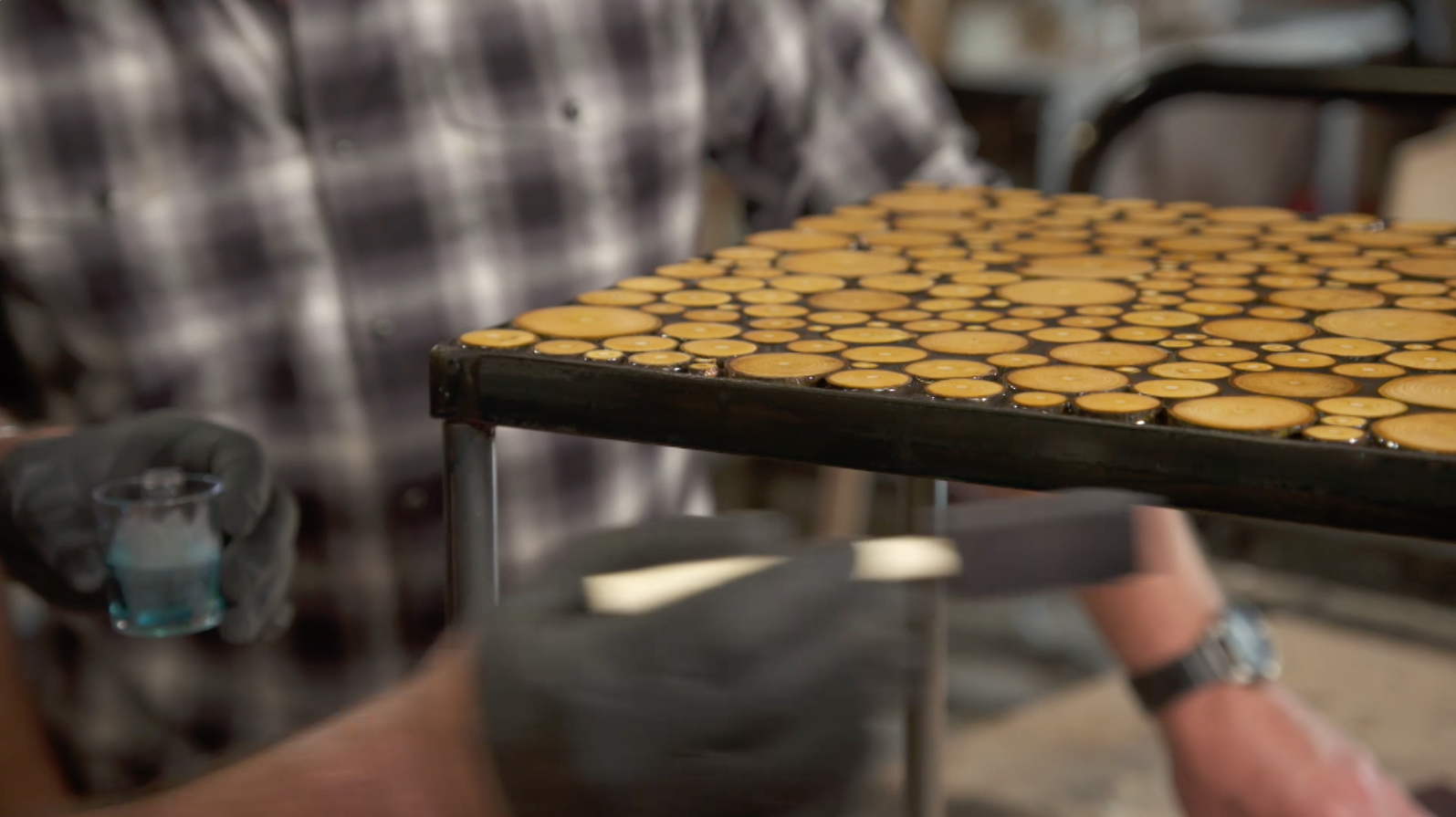
- Use a foam brush to apply chemical blackener to the metal frame and legs.
- This process creates a deep, rich color that enhances the industrial aesthetic.
- Once dry, apply a spray-on lacquer to protect the finish and add shine.
- Use painter’s tape to protect the twig top while spraying the frame.
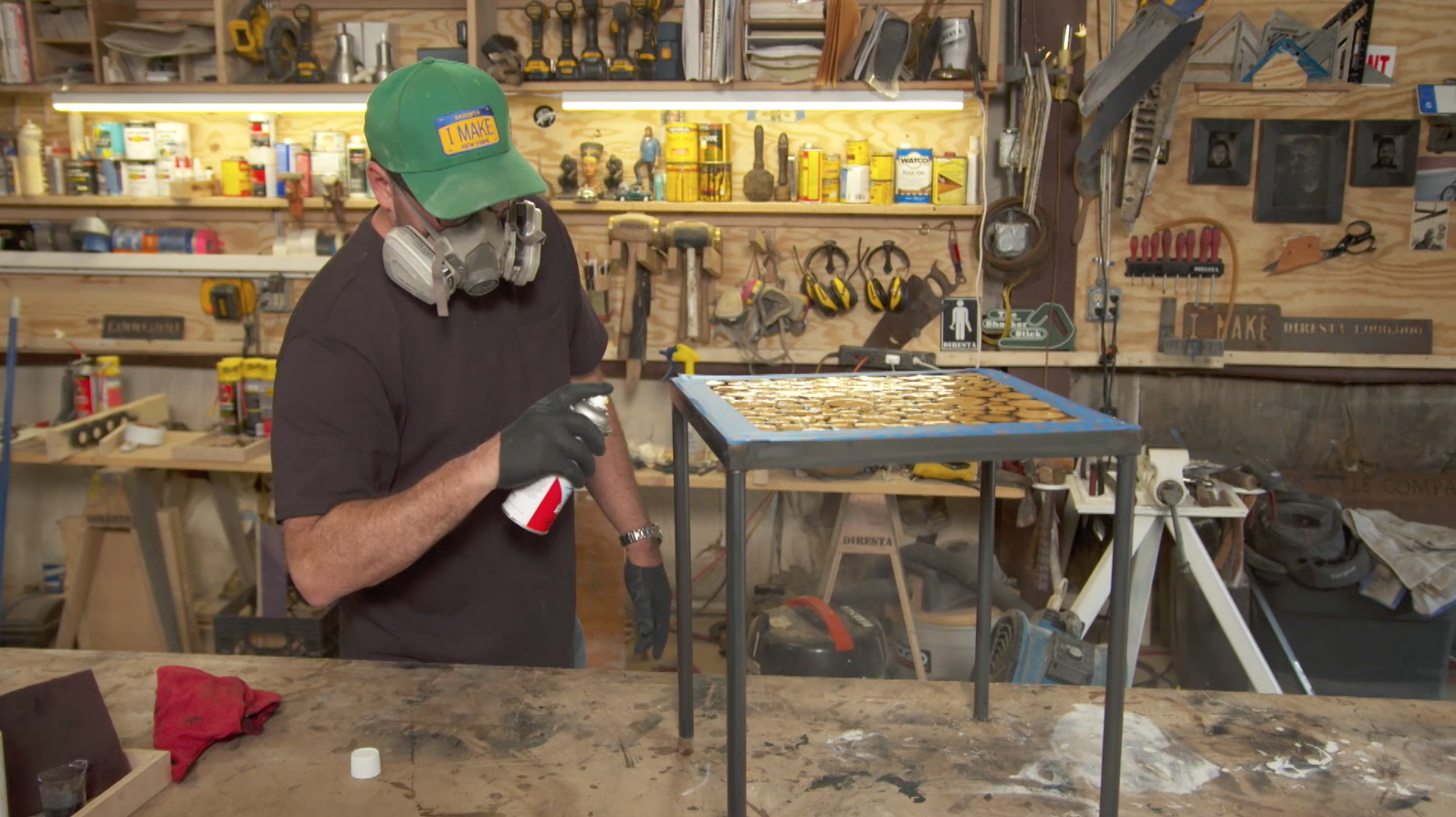
These finishing touches ensure that the metal frame not only supports the tabletop but also adds to the overall aesthetic of the piece.
Our Conclusion

Creating a sliced twig table is an excellent way to bring a piece of nature into your home while showcasing your DIY skills. This project combines simple materials with basic metalworking and woodworking techniques to produce a truly unique piece of furniture. With a little patience and creativity, you can craft a conversation-starting table that’s both functional and visually striking, integrating natural elements with an industrial vibe that is sure to impress.







